The Kodak Instamatic 500 might look like a common Instamatic camera. Boxy, thick, pocketable and simple, quickly loaded with a 126-film cassette. But once you take a closer look it is (perhaps the most) exclusive in its operation. The plastic box is only superficially plastic. The whole innards as well as the polished sides of the camera are metal. And the lens… The lens! It’s a Schneider-Kreuznach Xenar!
If that information doesn’t ring a bell, let me just say that that brand of lenses are considered to be top of the range. They’ve manufactured lenses for everything from full format field cameras to rangefinders and compacts. And the lenses are known for the crispy sharp images they produce.
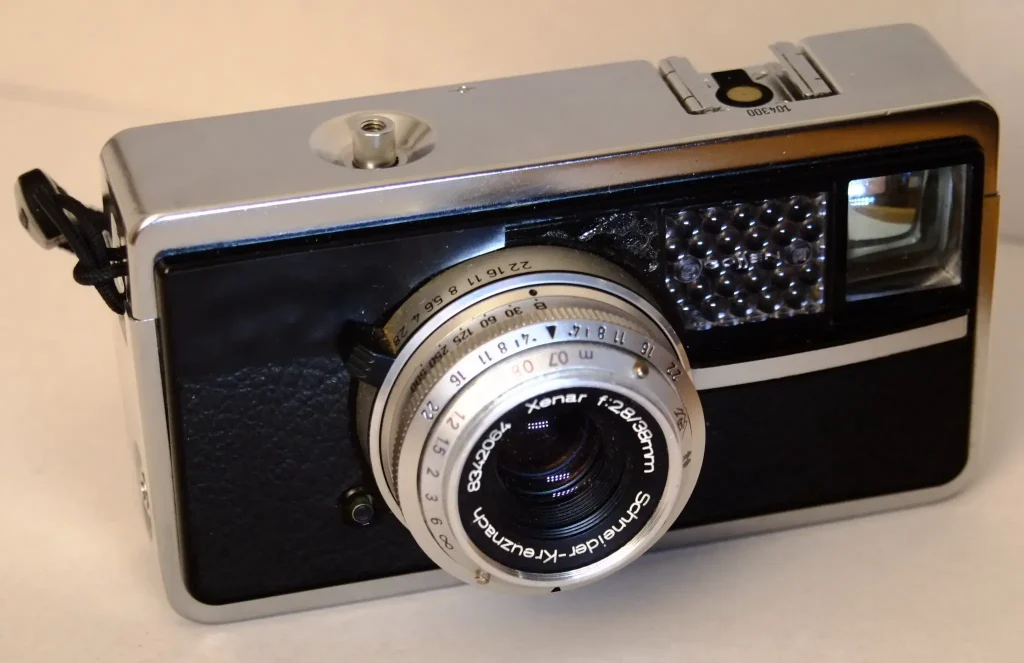
So, why put a top-notch lens on a stupid Instamatic? Well, why not. The cameras fast came to be tremendously popular in the burgeoning age of holiday travel, mostly due to the quick-loading (cassette) system, I suppose. So why not present one with a bit of class.
Now. The 126-film format is obsolete since the early nineties. I’ve made one or two attempts at loading a cassette with 135-film. But I’m not particularly into visible sprocket holes in my photos.
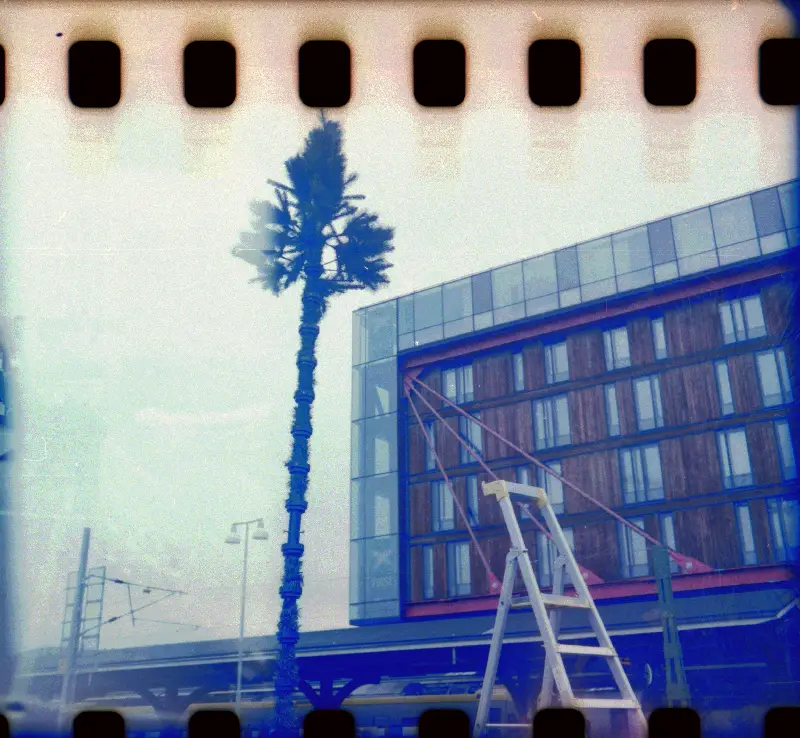
So I didn’t have any qualms from removing the lens from the Kodak to instead mod it to fit my M39 (Leica screw mount) cameras. In particular the Fujifilm XE-1 (with M39 to X adapter). Also it would fit my Soviet rangefinders as well as my Canon P, but would not be rangefinder coupled.
Here follows a pictorial guide to my rather crude process. Sensitive readers be advised!
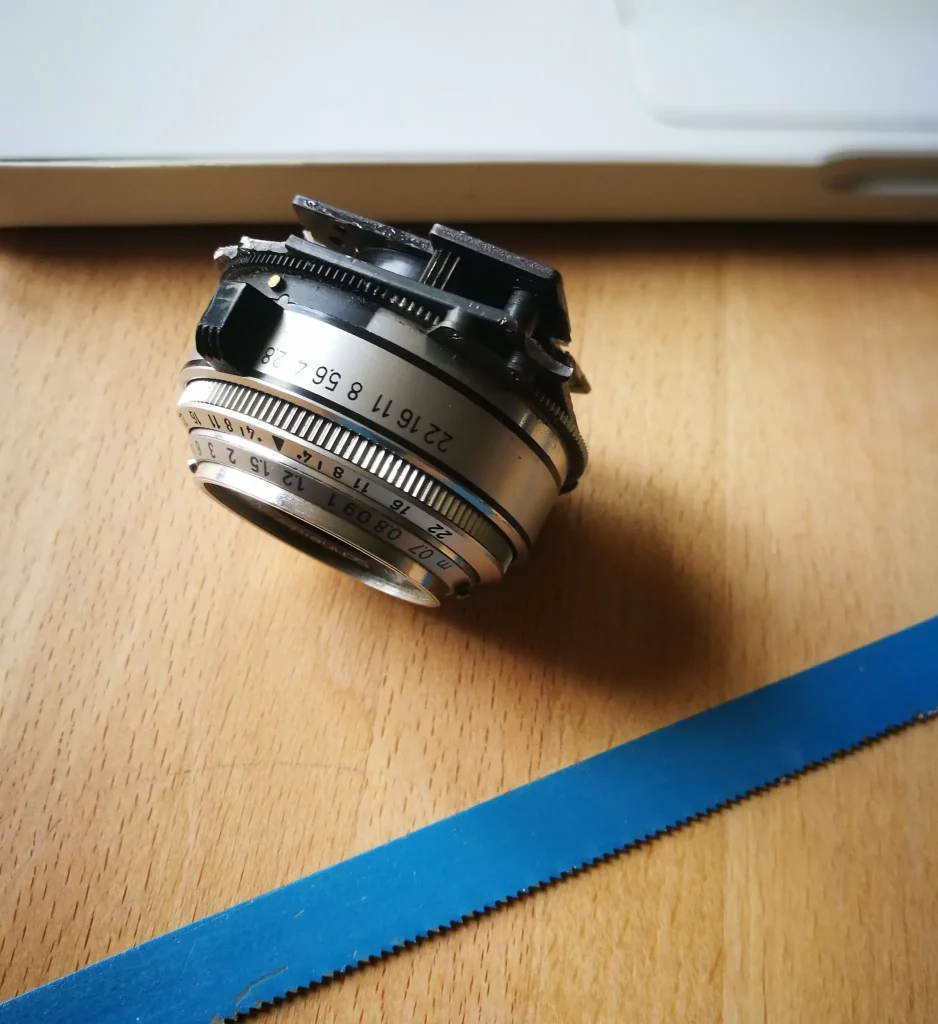
Here I’ve removed the lens from the camera body. So far I hadn’t had to break anything. Both shutter mechanism and aperture are situated in the lens body.
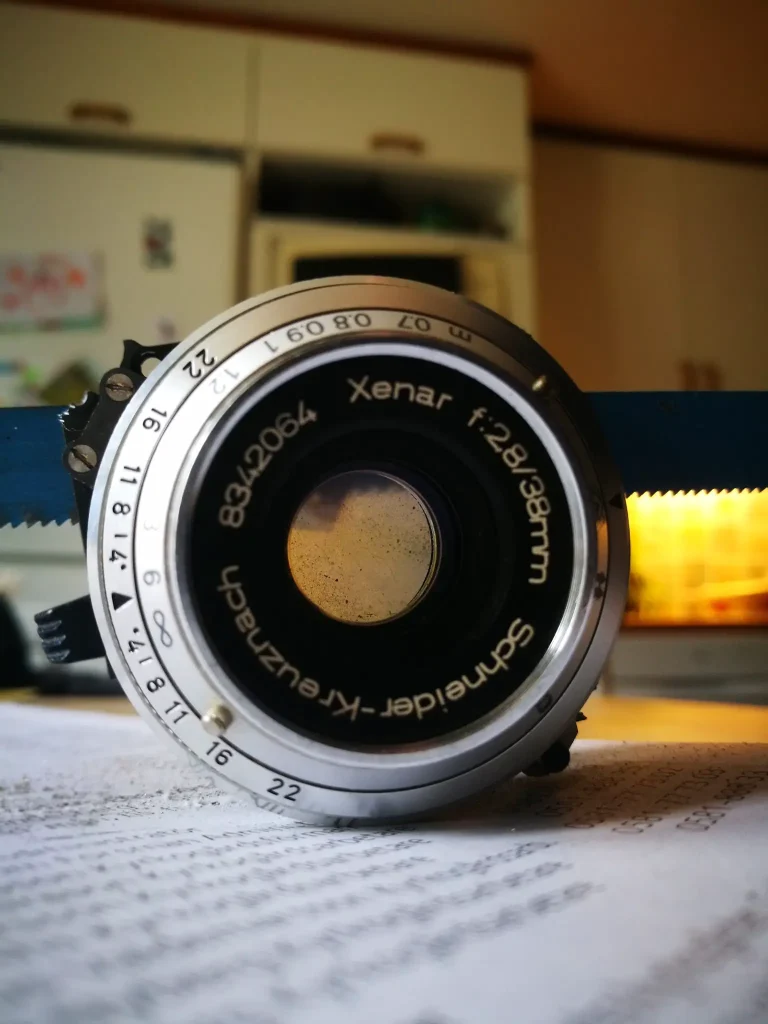
I then proceeded to removing (sawing off the mounts of) the plate that holds the collapsible (oh did I forget to mention that detail?) lens. (Here’s some info on Camerapedia.)
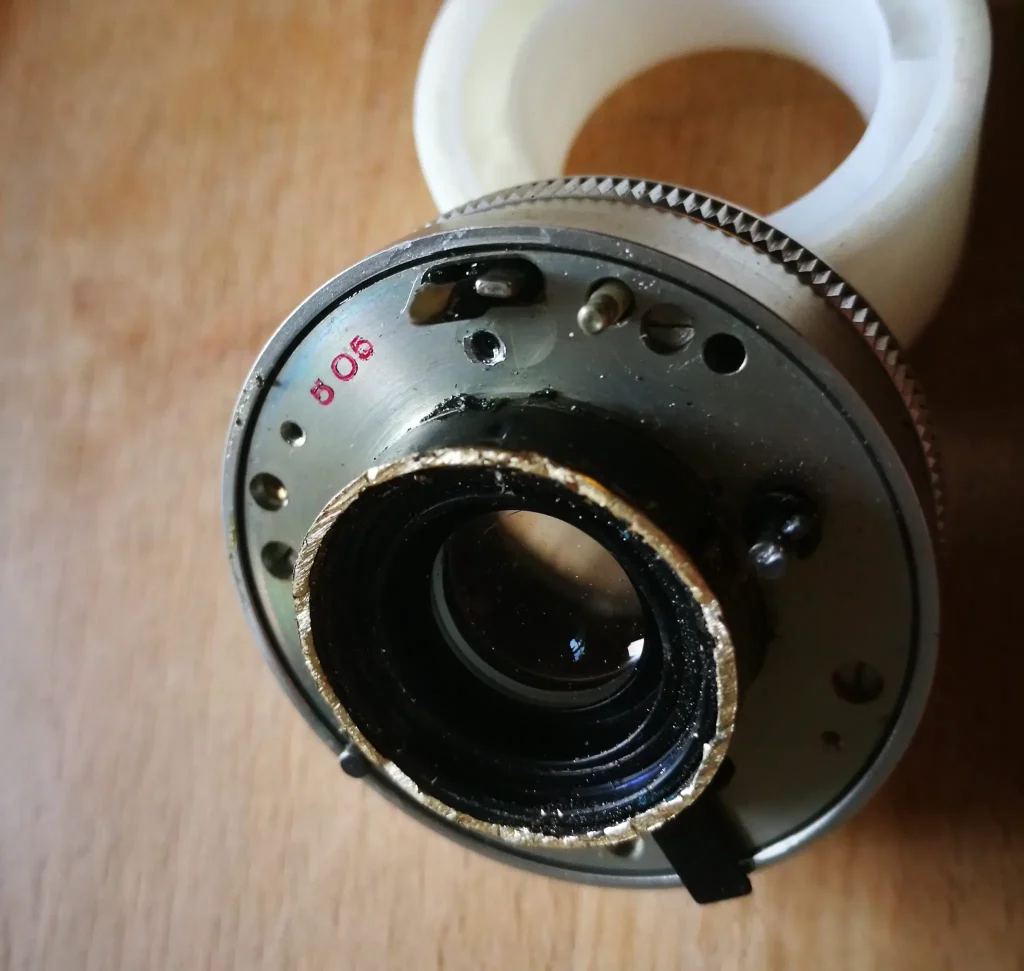
Here I’ve removed the entire mount section. And sawed off the back of the lens drum (is that a term?) because it just seemed too long for a compact lens. There is a peg to the top right which has a tiny pin running through it. That one cocks the shutter mechanism when you turn it. (They look similar on many cameras.) I then needed to have the shutter blades out of the way (to use the rangefinder cameras’ own shutters) so put the lens’ shutter to B, then tripped and glued the shutter release – flat peg on the top left – so it would hold it permanently open.
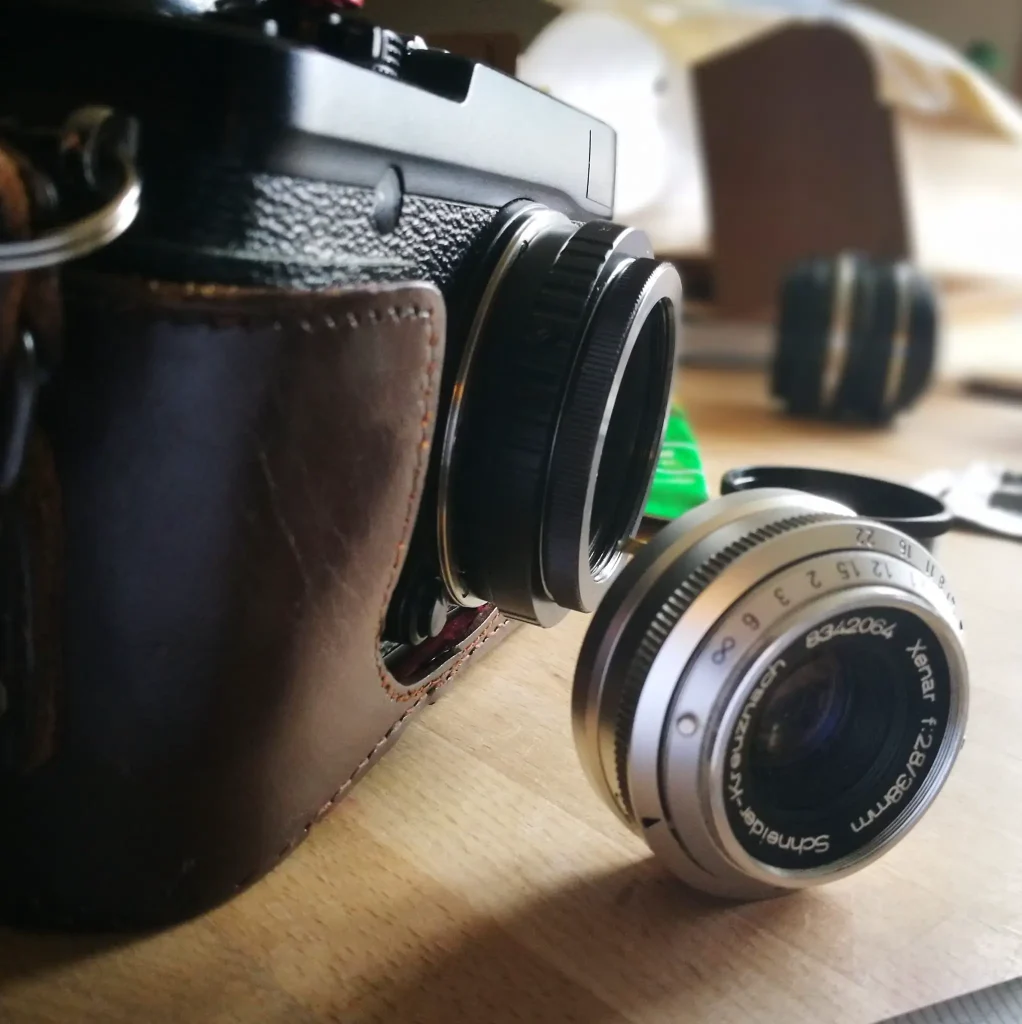
I tried to hold the lens to my M39 to X adapter to find the correct distance to the image sensor to get close focus (1m) and infinity. Here I’ve tried a 15 mm macro ring which was a tad bit too thick to get focus at 1m.
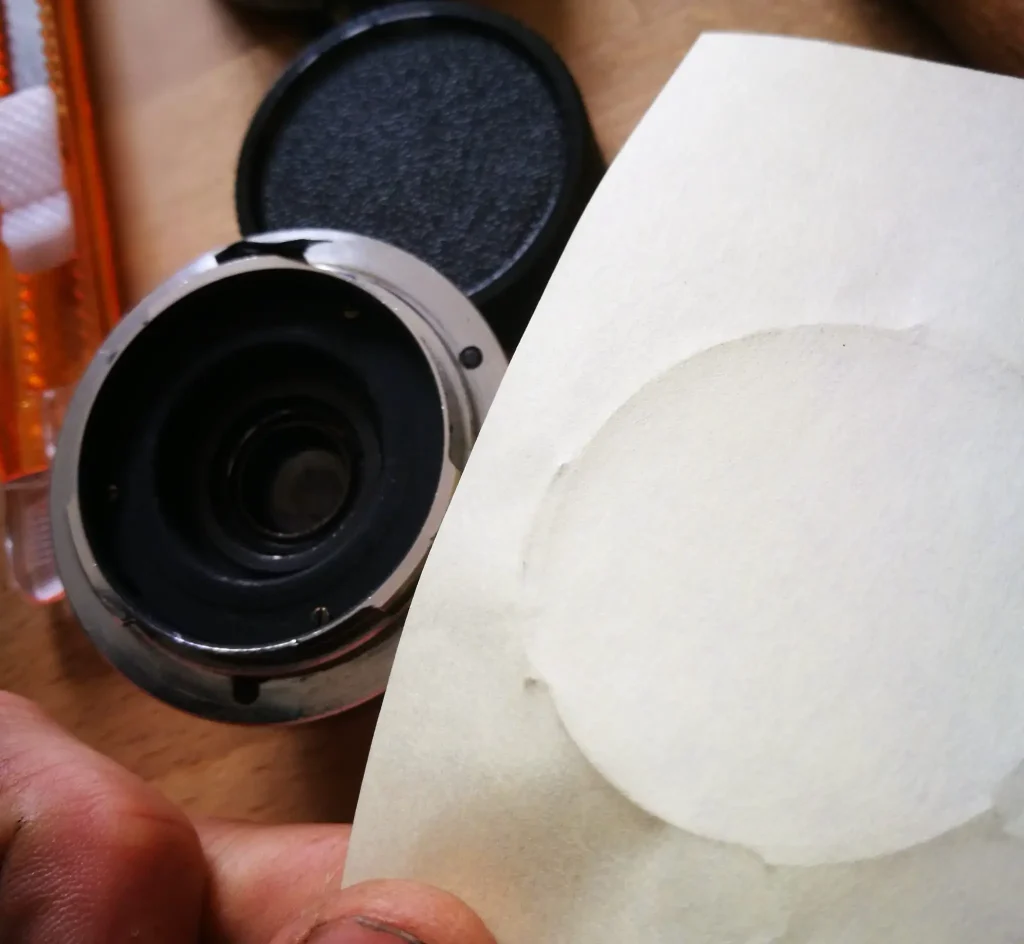
For a while I toyed with the idea to somehow forge a lens mount for my Olympus Pen F to make the lens fit that camera. I’ve twice in the past modded lenses for the Pen F. (Here’s one of the times.) But I abandoned the idea when I came to think of a mount from a previous M39 mod that I wasn’t using much at all. (This one.)
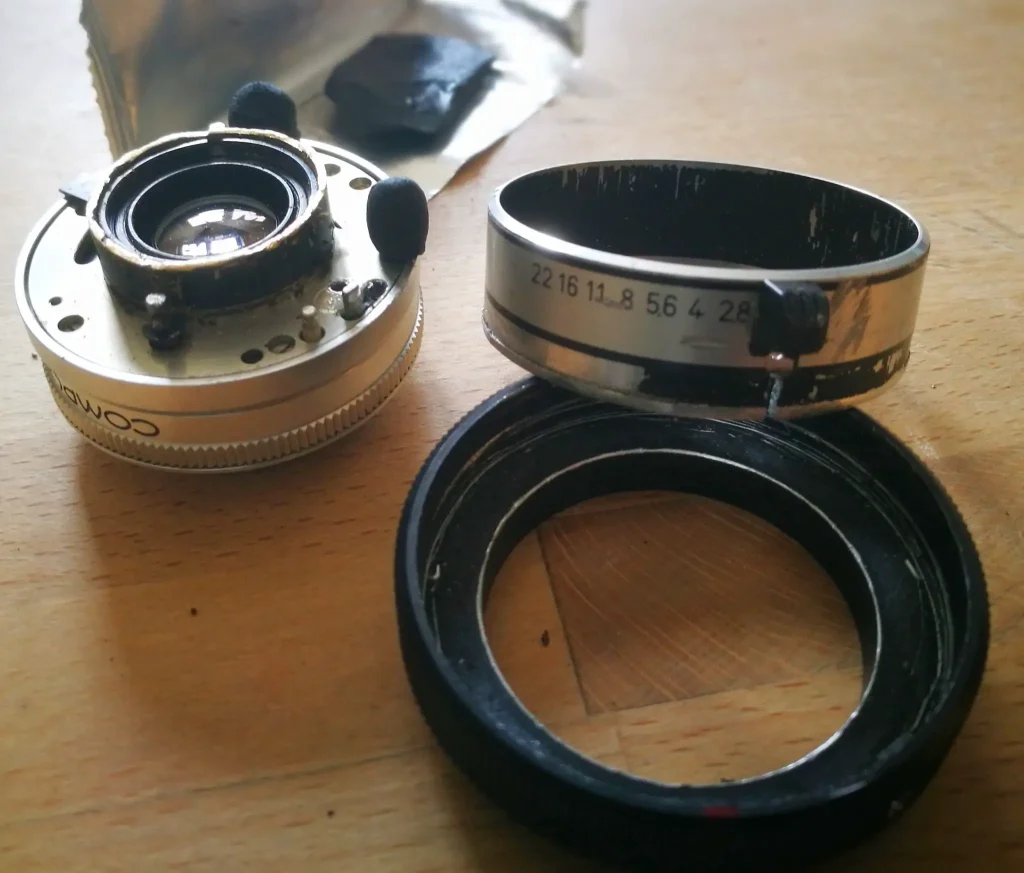
I pilfered the M39 mount and it fitted like a glove to the Xenar and would also hold the aperture control ring, which I hadn’t been sure I could use. I sanded/filed off the gear-wheeled edge of the aperture control ring and had to cut the control peg for it to fit.
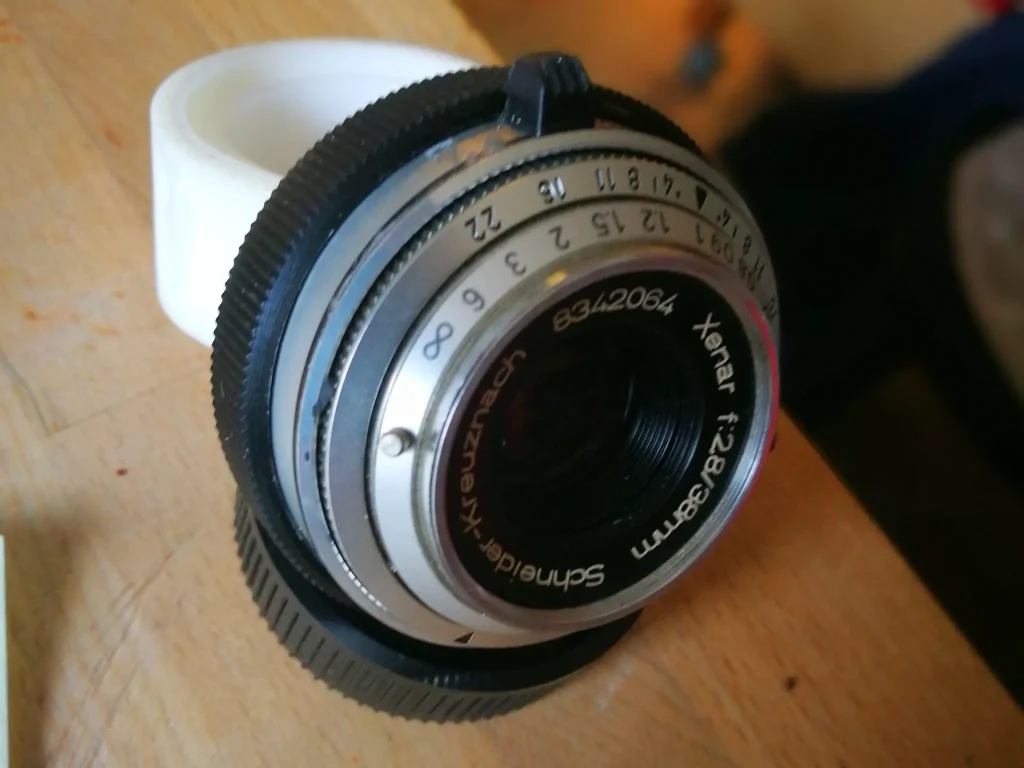
Above you see the lens mounted and finished to use. The Sugru rubber clay first had to dry overnight. The last thing I had to do before actually affixing the lens body to the adapter with the clay was to make sure that the aperture control would work. The aperture is changed by sliding the flat black metal thingy. It ends just outside of the edge of the lens body and slots into a groove on the inside of the aperture ring.
In this modding process the aperture ring had become rather flimsy/rickety in operation and the precision required to make the control work suddenly felt a bit much for me (who is rather more of a crude stick-stuff-together-with-sticky-stuff kind of person). The two bits (aperture slider and control ring) had to meet and stick together on a very small surface of contact. But to my surprise (and precision) I managed to dab a tiny bit of sticky Sugru to the tip of the slider which actually met the sticky in the ring groove when I put the whole thing together. And they didn’t stick to other stuff nearby which would have locked the aperture in one permanent position.
Phew!
And, again to my surprise, the lens turned out to be the crispest sharpest lens I own! So far I’ve used it on my half-frame sensor XE-1 but intend to try in on a full frame 35 mm film camera soon. The lens was made to be used for square format images so I’m not entirely sure it will expose evenly on the whole film surface in all full frame light conditions. My XE-1 is set in Velvia mode. The photos below are not edited but come straight from the camera.
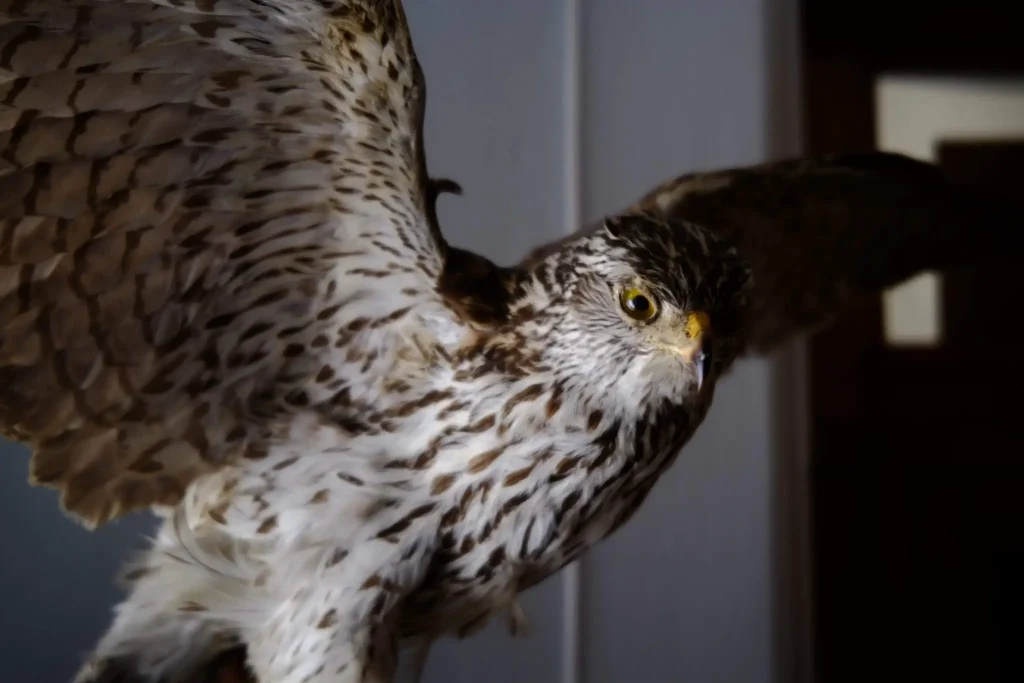
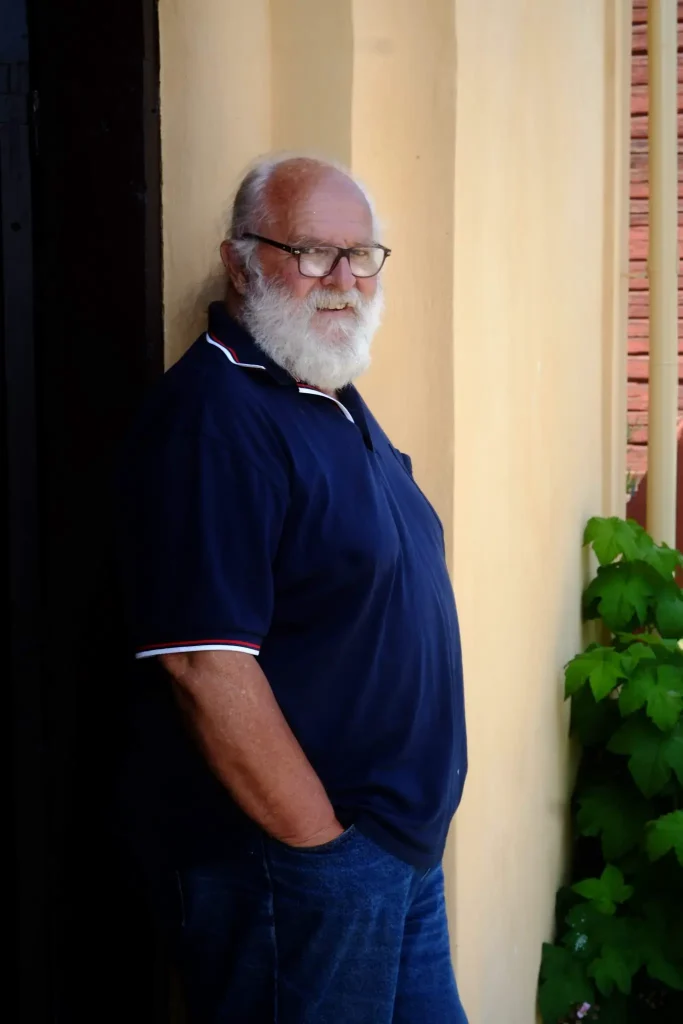
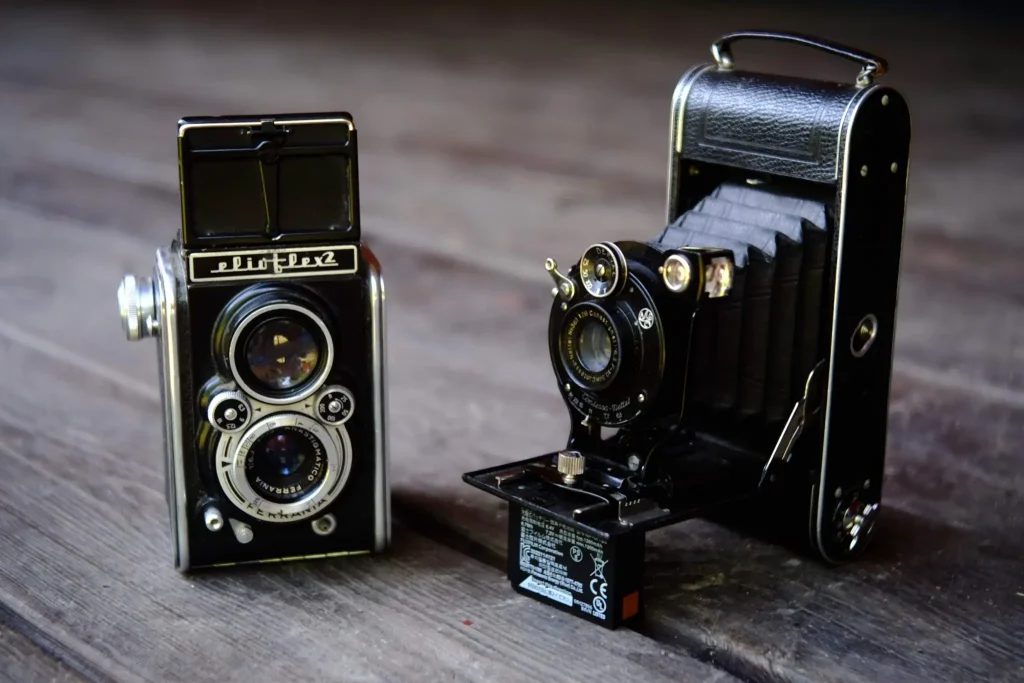



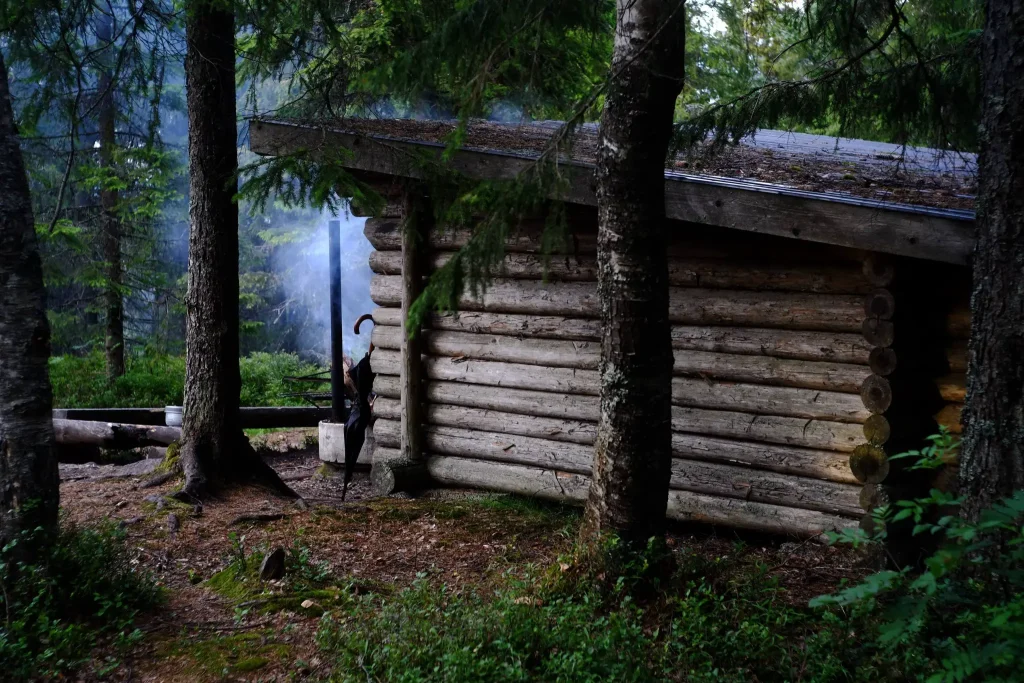
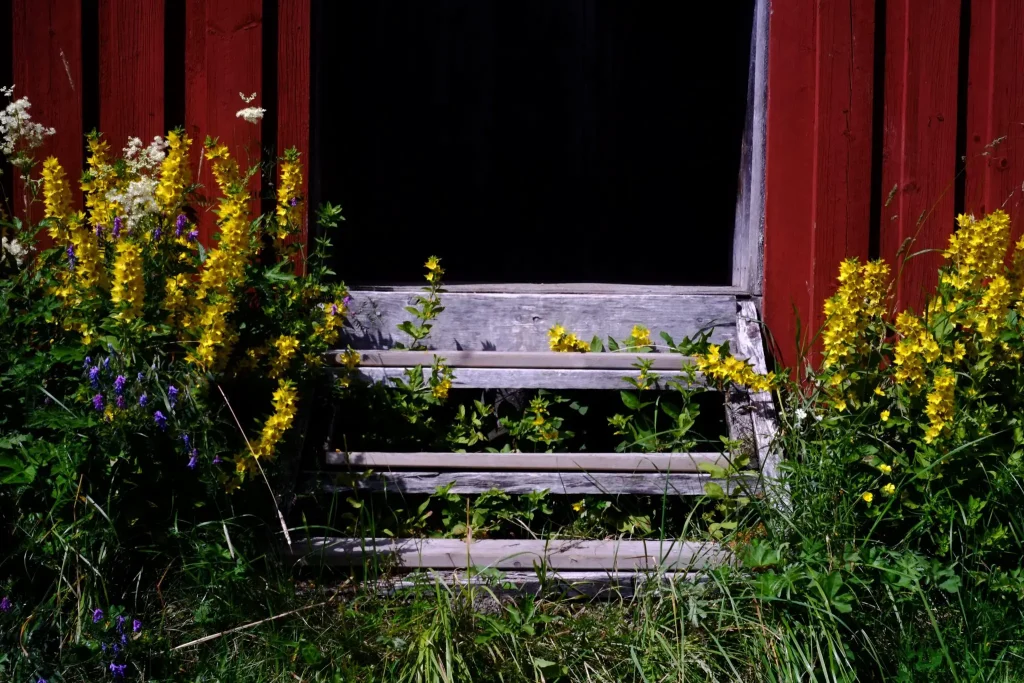
I hope you enjoyed reading about my mod!
There’s more to read in that vein on my blog.
Come visit my Etsy shop!
Cheers!
Share this post:
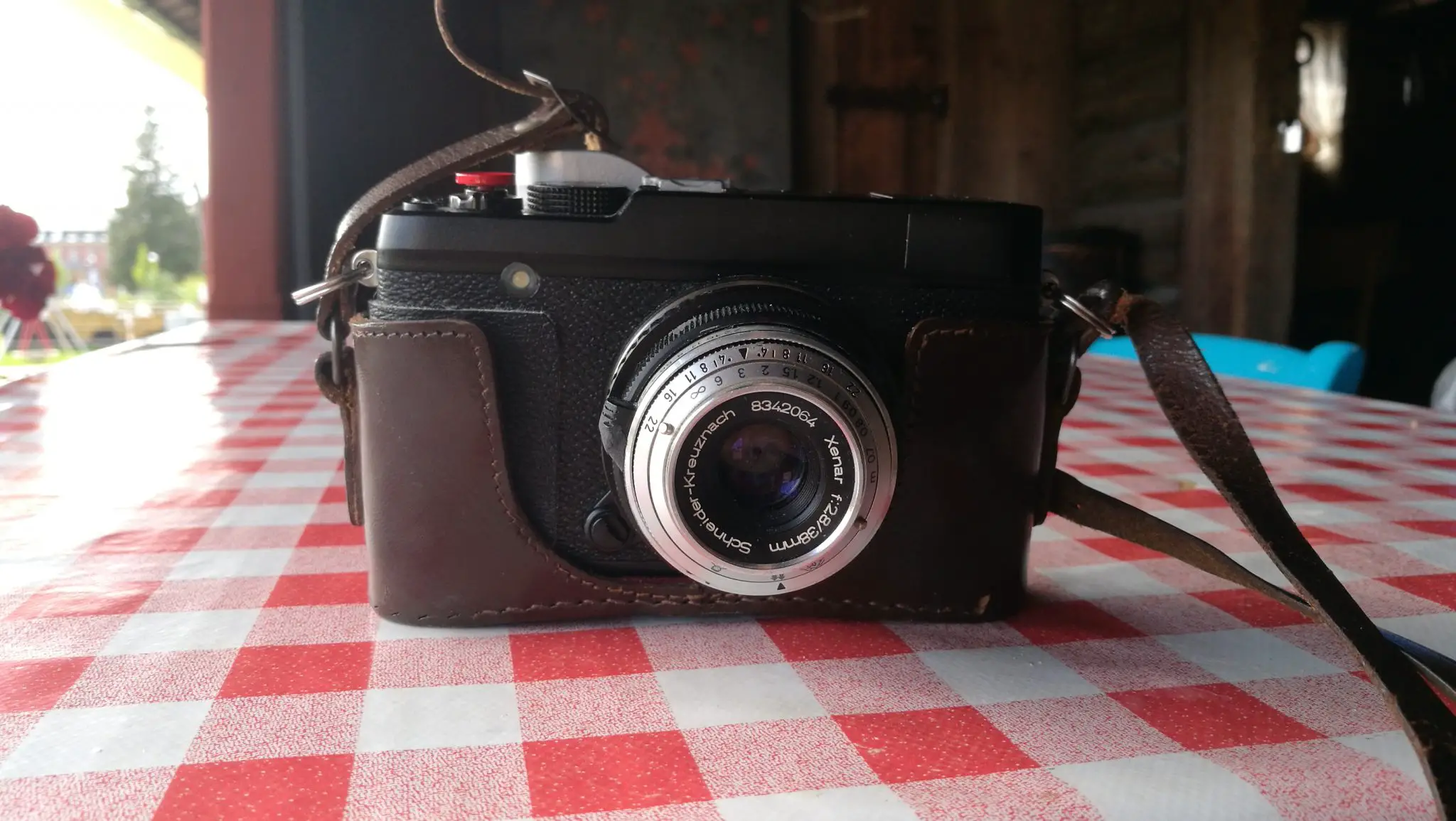








Comments
Terry B on That Time I Shot a Instamatic Lens on a Fuji XE-1 – by Tobias Eriksson
Comment posted: 05/08/2019
It's not as daft as you may think putting a high quality lens on a 126 camera. I have two 126's, both Rollies, the A26 with f3.5/40 Sonnar, Rollei version, and the SL26 with f2.8/40 Tessar, and a Carl Zeiss one at that, not a Rollei HFT version. And the problem was not the film as this could be to the same standard as 35mm. The problem was the cartridge, or specifically those made by Kodak.
I read some time ago that Kodak did not have the expertise such as Agfa in precision plastic injection moulding and Kodak's cartridges were lower quality (thinner plastic and thus flexible) with the result that the film wouldn't seat properly at the film gate.
So it didn't matter how good the camera was, use it with Kodak film and the results would be just as bad as with a cheaper camera.
Regarding the covering power of the lens, providing it was designed to fully cover the 126 frame, it should give pretty good coverage with FF 35mm as the 126 format is 28x28mm giving a diagonal of around 39mm, compared to c.43mm for FF 35mm.
Great to see your Ferrania Elioflex 2. I've got an Elioflex, but as the faceplate is missing I've no idea what version it is.
Comment posted: 05/08/2019
Christopher Emerick on That Time I Shot a Instamatic Lens on a Fuji XE-1 – by Tobias Eriksson
Comment posted: 05/08/2019
Comment posted: 05/08/2019
Kurt Ingham on That Time I Shot a Instamatic Lens on a Fuji XE-1 – by Tobias Eriksson
Comment posted: 05/08/2019
Comment posted: 05/08/2019
Peter on That Time I Shot a Instamatic Lens on a Fuji XE-1 – by Tobias Eriksson
Comment posted: 05/08/2019
Comment posted: 05/08/2019
D Evan Bedford on That Time I Shot a Instamatic Lens on a Fuji XE-1 – by Tobias Eriksson
Comment posted: 05/08/2019
Comment posted: 05/08/2019
Cheyenne Morrison on That Time I Shot a Instamatic Lens on a Fuji XE-1 – by Tobias Eriksson
Comment posted: 05/08/2019
Charles Morgan on That Time I Shot a Instamatic Lens on a Fuji XE-1 – by Tobias Eriksson
Comment posted: 06/08/2019
Comment posted: 06/08/2019
Comment posted: 06/08/2019
That time I adapted lenses to (rather than from) a Chaika - by Tobias Eriksson - 35mmc on That Time I Shot a Instamatic Lens on a Fuji XE-1 – by Tobias Eriksson
Comment posted: 26/12/2019
Quinten on That Time I Shot a Instamatic Lens on a Fuji XE-1 – by Tobias Eriksson
Comment posted: 31/05/2022
I was wondering: how did you manage to remove the lens from the body from the instamatic?
I also have one at my disposal and want to try to reuse the lens like you did. But i do not see any option to remove the lens.
Comment posted: 31/05/2022